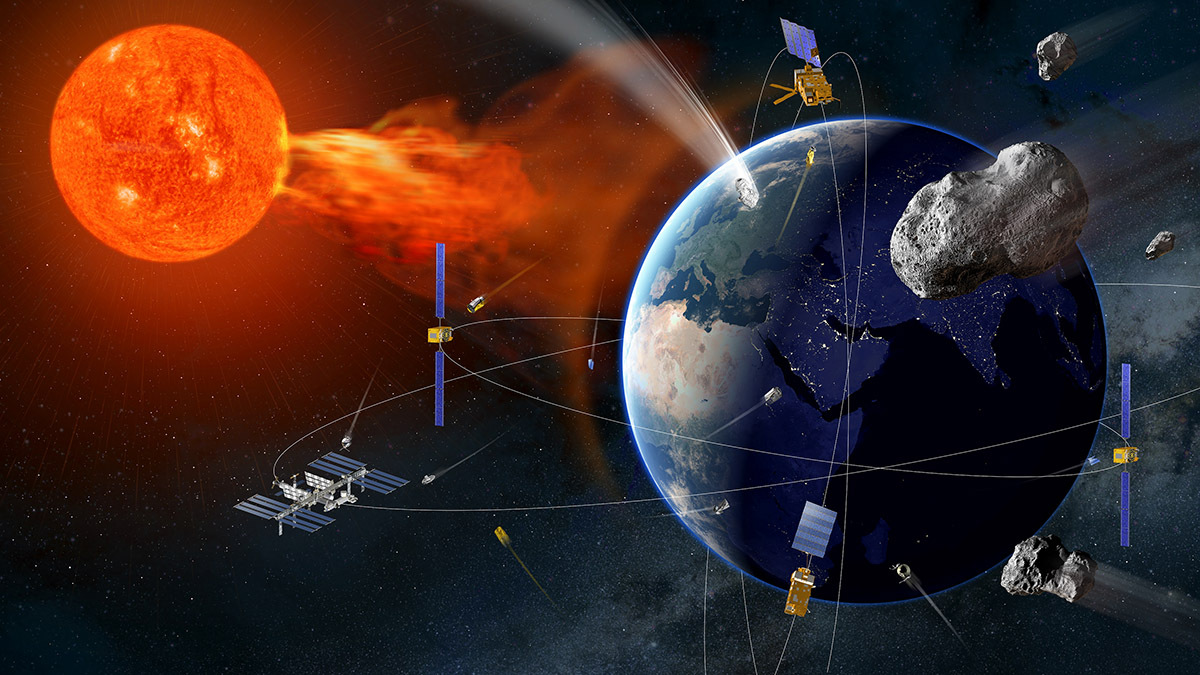- Deflecting asteroids without breaking them
- As a last resort… a nuclear charge
The impact of an asteroid from outer space on Earth is a real risk. If it were to happen, depending on its size, the damage it would cause to the planet could be catastrophic, causing mass extinctions and altering living conditions, as has already happened in the distant past and as evidenced by the traces left on our Blue Planet.
Fortunately, the collision of a celestial body with Earth is the ‘only natural disaster that we can prevent today’. This is according to the scientist responsible for the European Space Agency’s (ESA) main planetary defence programmes, German Michael Kueppers, who works at the European Space Astronomy Centre (ESAC) in Villanueva de la Cañada, near Madrid.
NATO and many armed forces of allied nations, including Spain, have established centres for monitoring outer space. Since 20 November 2019, the Atlantic Alliance has considered outer space to be an operational domain, similar to the land, sea, air and cyber domains.
However, the global security of our space environment, now known as planetary defence, is not subject to military control, let alone under the umbrella of NATO. It remains within the sphere of action of space agencies and ad hoc coordination organisations, such as the International Asteroid Warning Network (IAWN) and the Space Mission Planning Advisory Group (SMPAG), both within the UN.
This is because military concerns are focused on detecting and tracking the launch, flight and re-entry of intercontinental and hypersonic ballistic missiles in the different layers of the Earth’s atmosphere. They are also concerned with what is happening in low orbits, especially above 450-500 kilometres, where most spy satellites are located. And in medium orbits, above 5,000 kilometres, which are occupied by navigation devices. Up to the geostationary orbit, which reaches 36,000 kilometres, the height at which many communications satellites are placed.
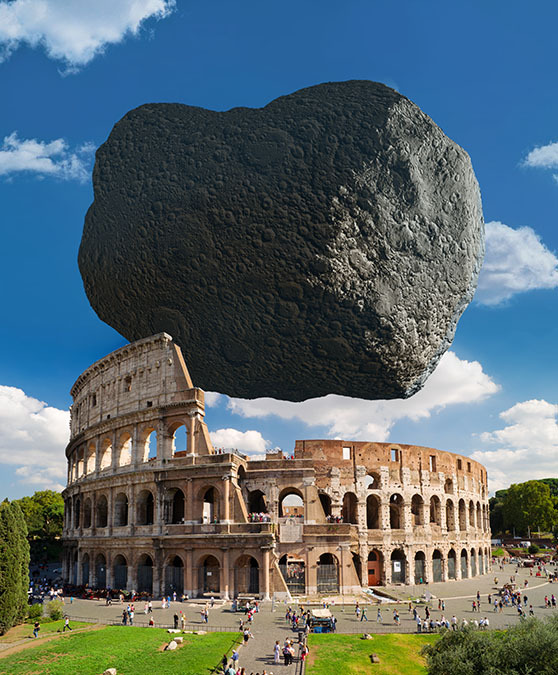
Deflecting asteroids without breaking them
But beyond 36,000 kilometres, the real protagonists are the space agencies, primarily those of the United States (NASA), the European intergovernmental agency (ESA), China (China), Japan (JAXA) and even the European Union Agency for the Space Programme (EUSPA), which also has an initiative called Space Situational Awareness (SSA), one of whose components is the detection of asteroids and comets.
In January 2016, NASA established a Planetary Defence Coordination Office to track, find and monitor asteroids and celestial bodies that could pose a danger to Earth. Its headquarters are located at the Agency’s headquarters in Washington. The ESA had already created a similar organisation in May 2013, located at its Earth Observation Centre (ESRIN) in Frascati, about 20 kilometres south of Rome.
Working in Frascati is Juan Luis Cano, the information coordinator for ESA’s Planetary Defence Office, who took part in a recent international simulation exercise organised by the SMPAG involving researchers and technicians from some 20 space agencies. The exercise culminated in the 9th Planetary Defence Conference organised by the International Academy of Astronautics and held from 5 to 9 May in Cape Town, South Africa.
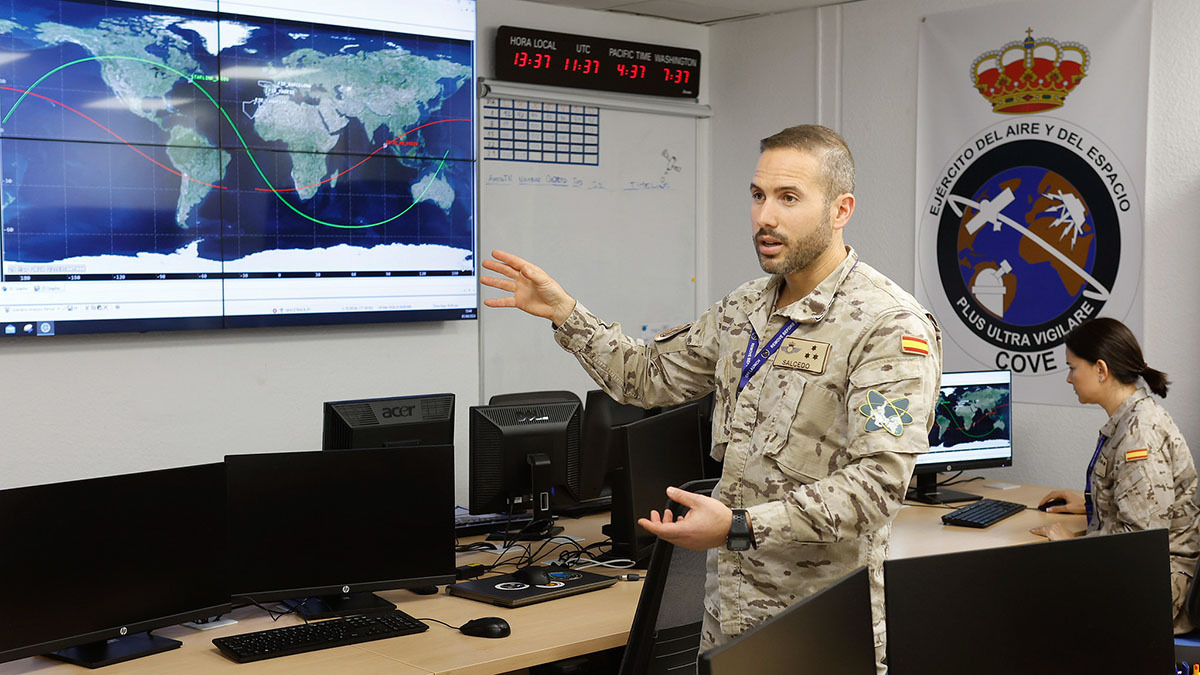
In the challenging real-time training exercise, ‘we implemented and validated action protocols with the aim of choosing the best possible alternatives for deflecting a hypothetical asteroid on a collision course with Earth,’ summarises Cano. Scientists and engineers agreed on three options for dealing with major threats from outer space. The first is to collide what is known in space jargon as a ‘kinetic impactor,’ for example, a space probe or a spacecraft associated with it.
This is what NASA did in September 2022 with the DART mission against the asteroid Dimorphos, a body about 163 metres in diameter and larger than the Colosseum in Rome. For Michael Kueppers, the impact marks ‘a turning point in planetary defence’ as it has effectively demonstrated a technology that, ‘for the first time, has managed to change the orbit of a small asteroid around a larger one, Didymos, almost five times its size’.
Now, since early October, ESA’s Hera mission has been travelling towards Dimorphos, which it will reach in late 2026. A probe weighing more than 800 kilograms and a European complement to the American DART, one of Hera’s main objectives is to quantify how Dimorphos’ mass has changed after the explosion. ‘We know that the impact was so strong,’ emphasises Juan Luis Cano, ‘that we suspect it was very close to the disruption limit, i.e. on the verge of fragmenting.’ This is a ‘very important issue for us, because what we want to avoid is the body breaking up, which would mean that instead of having one problem, we would have several.’
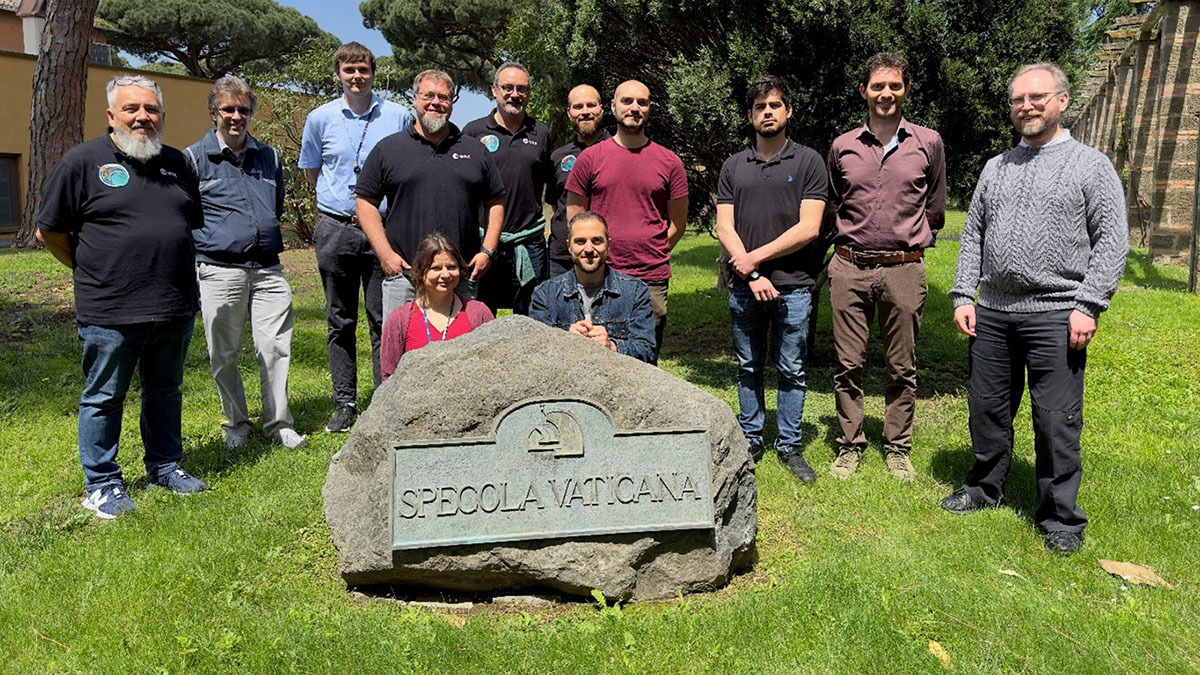
As a last resort… a nuclear charge
The second agreed method for deflecting an asteroid is to subject it to what has been called ‘ion beam herding.’ Essentially, this involves reaching the vicinity of the object whose trajectory you want to change, synchronising with its flight and projecting an ion beam emitted by an electric propulsion engine. ‘The energy of the ion beam striking the asteroid would be what would change its trajectory,’ explains Juan Luis Cano.
Proposed several years ago by a team from the Polytechnic University of Madrid, the method offers the advantage of ‘exquisite control over the asteroid,’ says the Spanish coordinator. The energy of the beam projected is ‘continuous over time’ but, with current technology, ‘it is very small’. In our simulations, we have found that the solution ‘is promising in cases where more than 15 years are available to move the asteroid from its original trajectory’. And that much time is not always available, quite the contrary.

But what is the population of near-Earth objects (NEOs), rocky debris swarming through the cosmos that is the waste from the formation of our solar system some 4.6 billion years ago? Juan Luis Cano confirms that any object smaller than 10 metres, of which there are around 45 million, ‘are of very little concern to us, because they will be almost completely destroyed upon entering the atmosphere’. However, according to data collected by NASA on 30 June this year, 38,612 larger NEOs have already been discovered.
Of these, the most dangerous due to their destructive effects are those larger than one kilometre—more than three times the height of the Eiffel Tower—of which 872 have already been identified—four of them 10 kilometres long—and it is estimated that around fifty remain to be found. Of those measuring 140 metres, slightly larger than the Egyptian pyramid of Cheops, 11,324 have been found, and researchers believe that around 14,000 remain to be located. It is estimated that there are around 120,000 measuring 50 metres, of which less than 10 per cent have been identified.
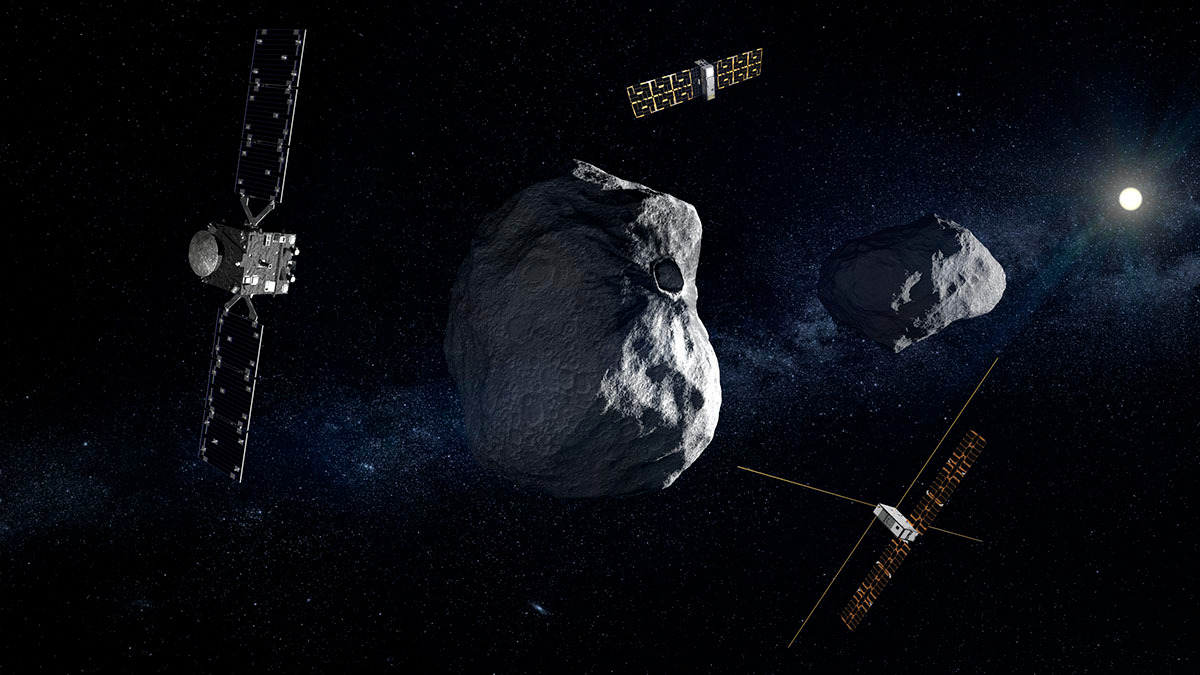
‘We know that with bodies less than 500 metres in diameter, a ‘kinetic impactor’ is likely to be more than enough’ to achieve deflection, emphasises Juan Luis Cano. But for larger objects, ‘slightly more drastic’ solutions would have to be considered. ‘We would probably have to use much more powerful devices, such as nuclear charges.’
The use of nuclear technology is highly controversial. The Spanish engineer points out that, at present, ‘it is a solution that NASA has not ruled out and that the United Nations Security Council could approve… if necessary.’ However, he insists that ‘NEOs of around one kilometre in size have almost all been located and are far fewer than those of smaller dimensions’, so based on probability calculations, ‘most of the objects that we may be forced to deflect can be dealt with using a ‘kinetic impactor’ and we will not need to resort to more radical technologies’.
